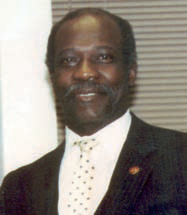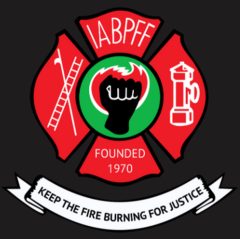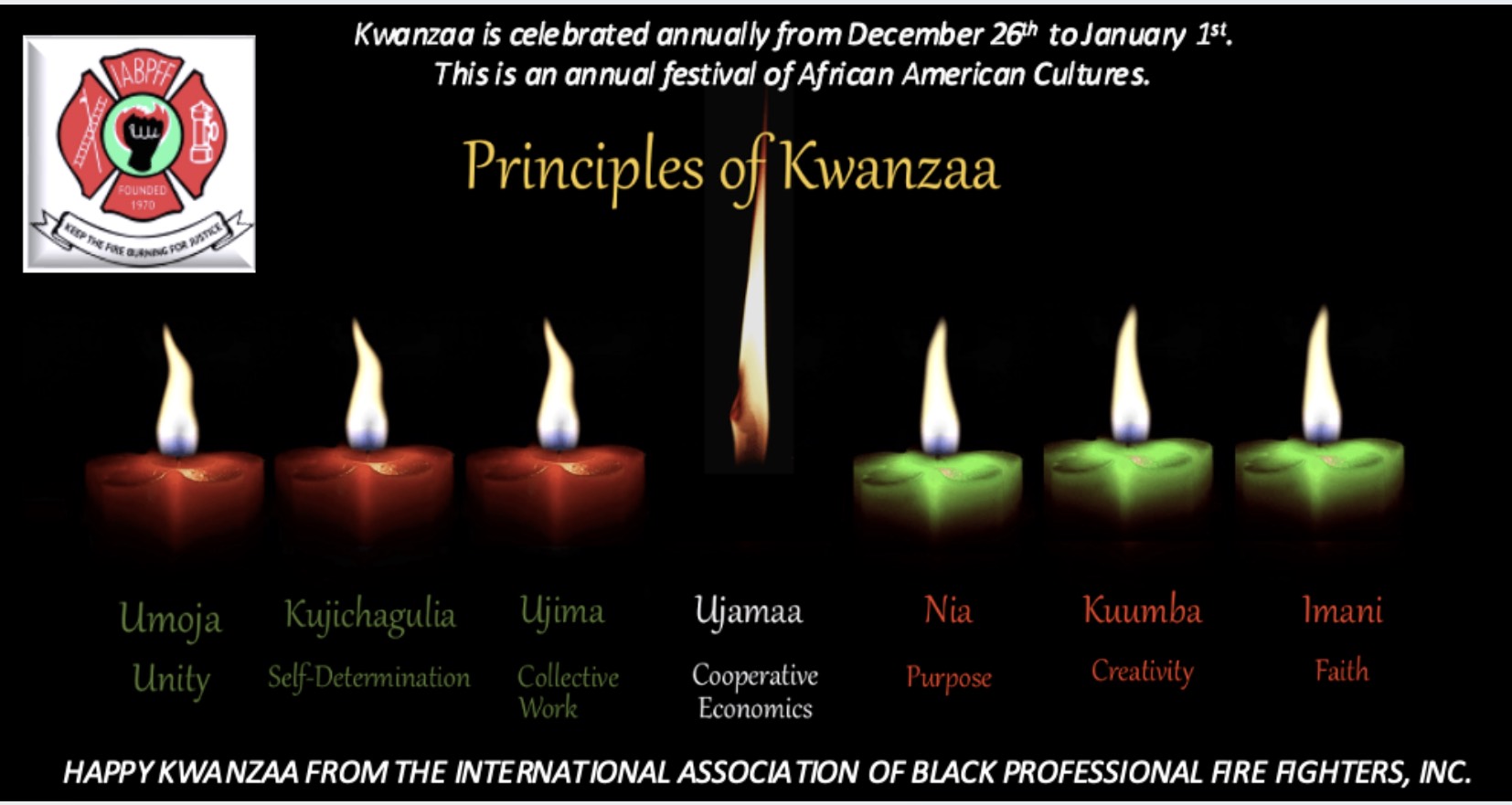
David James Floyd, F.D.N.Y.
First president of the
International Association of Black Professional Fire Fighters
Among Brother Floyd’s many accomplishments are, the dedication of the Street where the Harlem YMCA is located, 135th Street between Lenox Avenue and 5th Avenue as “Chief Wesley Williams Place”, in Honor of the founder of the Vulcan Society FDNY, Who used the Harlem Y as his training facility to prepare for, and maintain his legendary physical prowess to deal with the trials and tribulations of being a Black Man in a mostly all White environment.
Brother Floyd also is primarily responsible for the Chief Wesley Williams Statue that is located within the Harlem YMCA.
Attached are archives from the New York City Council’s Local Law Intro# 819 approving the Street designation, along with fascinating supporting documents about the legendary Chief, including a letter of encouragement from Fireman John Woodson postmarked January 6, 1919 on what to expect, and suggestions on how to handle the FDNY adversity.
So, whether your a young Black Firefighter within the FDNY, or a member of the IABPFF traveling to the Memorial from out of town as a show of respect to Brother Floyd’s Family, remember OUR History belongs to US, cherish and protect it, Brother Floyd’s vision, sacrifice and dedication are our Shining examples of what is possible.
Brother Floyd’s flyers were handed out by Vulcan’s throughout the city in the late sixties and early seventies announcing “CAN YOU FILL THESE BOOTS ” ? (With his Name on the Boot) Classes are being held at Vulcan Hall on becoming a New York City Fireman, I was handed one of those flyers leaving the Subway one day.
So, “All that I am, I owe, I live Eternally in the Red” thanks to Captain David James Floyd.
Fraternally,
EL
Time Line
- 1960- David James Floyd was appointed to the F.D.N.Y. On October 29, 1960 and assigned to Division 11, in Brooklyn New York., As Firefighter 4th Grade he was assigned to Engine 238 on March 11, 1961, as Firefighter 3rd Grade he was assigned to Ladder 108 on April 28, 1962.
- 1966- On June 11, 1966 David James Floyd was assigned to Rescue Company 2 in Brooklyn New York, becoming the FIRST BLACK FIREFIGHTER ever assigned to a Rescue Company in the HISTORY of the FDNY !
- 1971- David James Floyd was promoted on December 4, 1971 to the rank of Lieutenant.
- 1972- At the second Biennial Convention of the International Association of Black Professional Firefighters, in St. Louis, Missouri, more than fifty delegates and wives attended. David James Floyd was re-elected International President and Vincent W. Julius was elected Corresponding Secretary. Lieutenant David James Floyd was assigned to Ladder 123 on February 5, 1972, the roster of this legendary and illustrious Fire Company had the largest Black Firefighters representation than any Fire Company in Brooklyn, 17 of the 25 members were Black.
- 1973- On June 23, 1973 Lieutenant David James Floyd returned to Rescue Company 2 as a Rescue Officer. After other assignments Brother Floyd was Promoted to Captain on April 18, 1987, and his last assignment was as Captain of Ladder 20 in Lower Manhattan. He retired on April 24, 1996 after 36 Years of service to the F.D.N.Y. And, having served as President of the IABPFF for its first Decade, 1970-1980
How He Became the First President of the IABPFF
A meeting was called in Dave Jackson’s (The President of the Vulcan Society) room and the question was asked – who is going to run for president? It was suggested Dave run because he will be president of the Vulcan Society – 500 members – the largest organization in the IABPFF, and Shelly Harris from Newark ran against him. After the election Dave suggested we can’t have all of the Executive Board from the North East Region – Robert Paul was from Gary, Indiana, midway of the country as Vice President. Dave felt that having the Vice President from Indiana well eliminated some traveling and also saved money.
Dave thought the Treasurer should be close to the President in travel time and Charlie Hendricks volunteered to run. The Recording Secretary, Bill Brogden was from Philadelphia and the Recording Secretary from Columbus, Ohio. At the first press conference the reporter asked if this was an East Coast Organization and Dave was able to demonstrate the Officers represented various selections of the country. The Convention also attracted TV coverage and the interviewer used two microphones, Dave Jackson held one and the interviewer another. When we watched the televised interview that evening, Dave Jackson’s answers were dubbed to respond to questions that were different from the original interview.
Some very important lessons were learned in dealing with the press and meetings with organizations – especially the Union – i.e., decide who is going to do the talking, who is to do the listening and never go to a meeting alone, and most important, – critique the meeting immediately after it is over. Also, never talk in the bathroom and look out for the guy in the stall.
In discussing the early goals in forming the IABPFF, the four original objectives were still in place but the most effort was directed to increasing the number of minorities in the most effort was directed to increasing the number of minorities in Fire Departments nationwide. Second, the strong push for upward mobility. If we could get our Members into the upper ranks of the Fire Department across the country we could affect policy decisions, and third – was to reach out to our communities.
In the early years as President, Dave’s personal objective was to keep the Organization moving in one direction together. He felt that if he had taken a radical stand “The Hate Whitey” posture, no one would show up at the next meeting. He had to balance the position of working within the framework of the IAFF to appear to appease the Union and keep them off our back. It was important to emphasize we were not a Union. Dave remembers the St. Louis Chapter as being against any relations with the IAFF.
Shortly after the Convention of 1970, the Union (IAFF) received a Grant to recruit minorities into the Fire Department. Dave had great doubts of the Union’s sincerity. An article in the Wall Street Journal announced the $450,000 Grant from the Labor Department. This precluded the IABPFF from requesting grant funding for recruiting for minorities. As a countermeasure, Dave wrote a Grant Proposal to the John Hay Whitney Foundation to monitor the IAFF effort to recruit minorities.
This was prior to the Second Convention in 1972. The John Hay Whitney Foundation dispensed the funding in “dribs and drabs” i.e. requests had to be made for travel expenses to each meeting. The Foundation would authorize funding to fly to the City to be monitored. By taking the bus, Dave had travel expenses for himself, a member of the IABPFF and a Vulcan Member in keeping with the principal – “Never Go To A Meeting Alone.”
After a few cities were monitored it was very evident to the Whitney Foundation that the Union was not using the Labor Department Grant to recruit minorities and Dave was able to supply enough evidence for the Foundation to produce the report. To compile the evidence the IABPFF had secured a copy of the Union’s Grant which stated specifically how funds were to be expended – i.e. rentals, travel, etc. Dave’s investigations showed conclusively funds were not being expended appropriately.
Howard McClennon, President of the IAFF, a Firefighter from the Boston Fire Department was very upset with Dave’s finding but there had been a sort of mutual respect generated over the years that kept the avenues of communications open.
One of the areas they had agreed upon was that the Local Chapters of the Union were autonomous as were the Local Chapters of the IABPFF autonomous and that the National bodies did not have full influence over the Local Chapters. The discussion turned to how the Convention sites were selected and Dave recalled he looked at St. Louis and the Chapter were having serious problems with the IAFF so the decision was to hold the IABPFF Convention in St. Louis to show National support for our Chapter and our Brothers under siege.
St. Louis had filed a lawsuit against discrimination in the Fire Department, this was certainly, if not the first, one of the first such actions in the country. On his return to the New York City Departments hiring practices even though Robert O. Lowery was the much respected Fire Commissioner and a Past President of the Vulcan Society.
Augustus Beekman, another Vulcan, was the Chief in Charge of the Community Relations Bureau and the highest ranking Black Officer. Among the Delegates and the Second Convention were fifty (50) members representing the Vulcan Society along with Delegates from Los Angeles and San Diego.
The IABPFF was truly off and running. When it came time to make the decision on the location of the Third Biennial Convention, Dave considered the West Coast but had serious doubts as to whether the Organization was strong enough to pull members clear across the continent. In 1973 Dave and some members of the Executive Board made a site selection trip to Augusta and checked on the newly opened Hyatt Regency Hotel, a truly beautiful property.
The Hyatt required the Association put down a $2,000 deposit. The IABPFF Treasury was in no financial position to comply and the Atlanta Chapter did not have that kind of funding. However, Dave had established a policy when we stayed at a hotel, Holiday Inn, etc., and our obligations were met he asked the Banquet Manager to send us a letter to confirm the facts and they replied. This provided the IABPFF with a sizable portfolio of complementary letters from many hotels. After reviewing the portfolio the Hotel rescinded its request for a deposit. In order to sell Atlanta to the Presidents of the Organization as the next Convention site, Dave invited them to come to Atlanta for a meeting of Presidents. This was the
beginning of the Executive Council concept and was added to the Constitution. The Convention was the first where wives and families attended along with members.
At this point the Convention Rotation System was not in effect and cities and Organizations would compete against each other for the privilege of hosting the Convention. That was a plus, but the downside was the politics involved in the decisions. It came down to – I will vote for your city if you vote for my candidate. This was detrimental to the process in the selection of the best leadership of the Organization. The normal rotation of Conventions was finally put in place and the next scheduled Convention was in San Diego, California.
This was the beginning of the Memorial Service processional and the use of Uniforms. The Memorial Ceremony was held at the Firemen’s Monument. The San Diego Chapter of the IAFF was involved in a labor dispute with the City of San Diego. The Union had secured a list of all of the Organizations who were scheduled to have a Convention in the City the following year. The IABPFF was targeted and pressured not to hold the Convention in San Diego. An emergency Board Meeting was held. The IABPFF was receiving threatening letters along with a photograph of a lynching from an old magazine. Dave received word that if we moved the Convention to Los Angeles, the expenses of the Convention would be covered – there was nothing in writing – just a phone call. Dave called a meeting of the Executive Board to explain the situation. Some felt the site should be changed.
Dave objected to the change because he felt the Organization would be weakened. He also felt it would be a disappointing blow to the Brothers of San Diego. The Executive Board voted not to change the site, but some of the Members expressed a concern about safety and bringing their families. On September 28, 1976, just a few days before the opening of the Convention in San Diego, Dave went to a clothing store in Brooklyn. He was waiting for a bus when two white men bumped him and one threw lye in his face. There was no attempt to rob him. He ran in a close-by Body and Fender Shop and threw water on his face. He identified himself as a Fire Lieutenant and that the police be called who transported him to the hospital. When he reported the incident to the Executive Board, the question of police protection arose. On his return to New York, Dave applied for a gun permit but didn’t take it any further.
He admits he was pretty paranoid for a few weeks following the incident. He experienced some facial blistering but his eyes escaped damage. The Convention of 1978 was held in Washington, DC which was the headquarters of the IAFF. They participated and put on a workshop. The concept was to make the Union aware the IABPFF was continuing to function and was expanding. In 1980 Detroit hosted the 10th year Convention. It was always a strong organization but up to that point did not participate fully in the Conventions.
The question is as always, can we help the Organization by going to their city and has the organization helped the IABPFF? Dave had made it a policy that when the Organization joined the IABPFF he would send a letter to the Officials of the City, would ask for names and Dignitaries, Mayor, Commissioners, President of the City Council, Fire Chief, etc., to explain who we are and the objectives of the Organization.
When the Chattanooga, Tennessee Chapter joined the IABPFF letters were sent to the Dignitaries following the established policy. When the next Executive Council was held in New York City – Chattanooga Fire Department supplied the President of the Organization a car and funds to travel to New York to participate in the Council Meeting. In a copy of the IAFF Union Publication a photograph was published of the Joint Council of National Fire Service Organizations which came together for lobbying purposes in Washington, DC at the IAFF Headquarters.
Dave noticed there was no Black representation on the Council. The question was how could the Organizations discuss the minority problems without minority representation. After a letter was forwarded to the Joint Council an invitation was extended to the IABPFF to join with all expenses paid.
The IABPFF was then included on the Letterhead with the other Member Groups. The Chairmanship was rotated and Dave became Chairman during the Carter Administration. The Council was disbanded because of internal frictions especially over the question of the site for the National Fire Academy. After the Detroit Convention and 10 years as President, Dave felt that his continuation in the position was blocking other members who had the talent and the qualification to lead the IABPFF. Charlie Hendricks of Philadelphia who had served as IABPFF Treasurer in Dave’s Administration ran for President. The ultimate sign of the good leader is one who works hard to prepare someone to fill his shoes – successfully.
Article written by Bro. John Ruffins
Submitted by Bro. George Collins, IABPFF Historian
“Keep the fires burning for justice”



